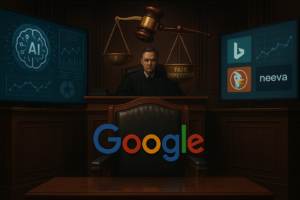Combating AI-Generated Child Exploitation Imagery: A Race Against Time
As authorities grapple with the alarming rise of AI-generated child sexual abuse imagery, law enforcement agencies are racing to adapt their strategies and legislation to counter this disturbing misuse of technology.
In a world where technology continues to advance at breakneck speed, one of the most alarming issues to arise is the proliferation of child sexual abuse imagery generated by artificial intelligence. This new breed of exploitation poses significant challenges to law enforcement, who are now tasked with not only identifying and prosecuting offenders but also navigating the murky waters of rapidly evolving technology.
Recent cases have highlighted the grim reality of AI’s misuse, showcasing individuals who have manipulated images to create grotesque representations of children. Law enforcement agencies across the United States are stepping up their efforts to combat this scourge, with officials from the Justice Department emphasizing the importance of aggressive prosecution. Steven Grocki, who leads the Justice Department’s Child Exploitation and Obscenity Section, has made it clear that there will be zero tolerance for those who exploit AI tools for such heinous purposes.
The legal landscape is also shifting, as lawmakers rush to update existing laws to encompass AI-generated content. The challenge lies in the fact that some of these images do not depict real children, complicating the legal framework used to prosecute offenders. In 2023, a notable case marked the first federal prosecution involving purely AI-generated imagery, signaling a new frontier in the fight against child exploitation.
Child advocates are urgently calling for measures to curb the misuse of AI technology. Their concern is that the growing prevalence of AI-generated imagery could ultimately impede efforts to rescue real victims, as investigators may waste valuable resources tracking down nonexistent children. The National Center for Missing & Exploited Children has reported a troubling uptick in AI-related cases, with the monthly number of reports climbing significantly.
Despite the proactive measures being taken at the state and federal levels, experts caution that law enforcement is frequently playing catch-up. With many offenders operating in the shadows, leveraging open-source AI models readily available online, the task becomes even more challenging. These offenders share techniques within dark web communities, refining their methods to produce increasingly realistic depictions of child exploitation.
The responsibility does not lie solely with law enforcement; technology companies must also take an active role in preventing misuse. Leading firms such as Google and OpenAI have begun collaborating with organizations focused on child protection, yet experts argue that more could have been done at the outset to ensure the safety of these powerful tools.
The existing datasets used to train AI models have also raised red flags. A report from the Stanford Internet Observatory revealed that some datasets contained links to explicit images of children, which facilitated the creation of harmful content. Although steps have been taken to remove such content, the reality remains that older versions of AI models can still be manipulated by offenders to produce disturbing imagery undetected.
As society grapples with these technological advancements, the imperative to protect vulnerable children grows ever more urgent. The conversation surrounding AI-generated exploitation imagery requires a multifaceted approach—one that encompasses legal reform, technological safeguards, and public awareness. Only through collective action can we hope to mitigate the risks posed by AI and safeguard the innocence of children in an increasingly digital world.


